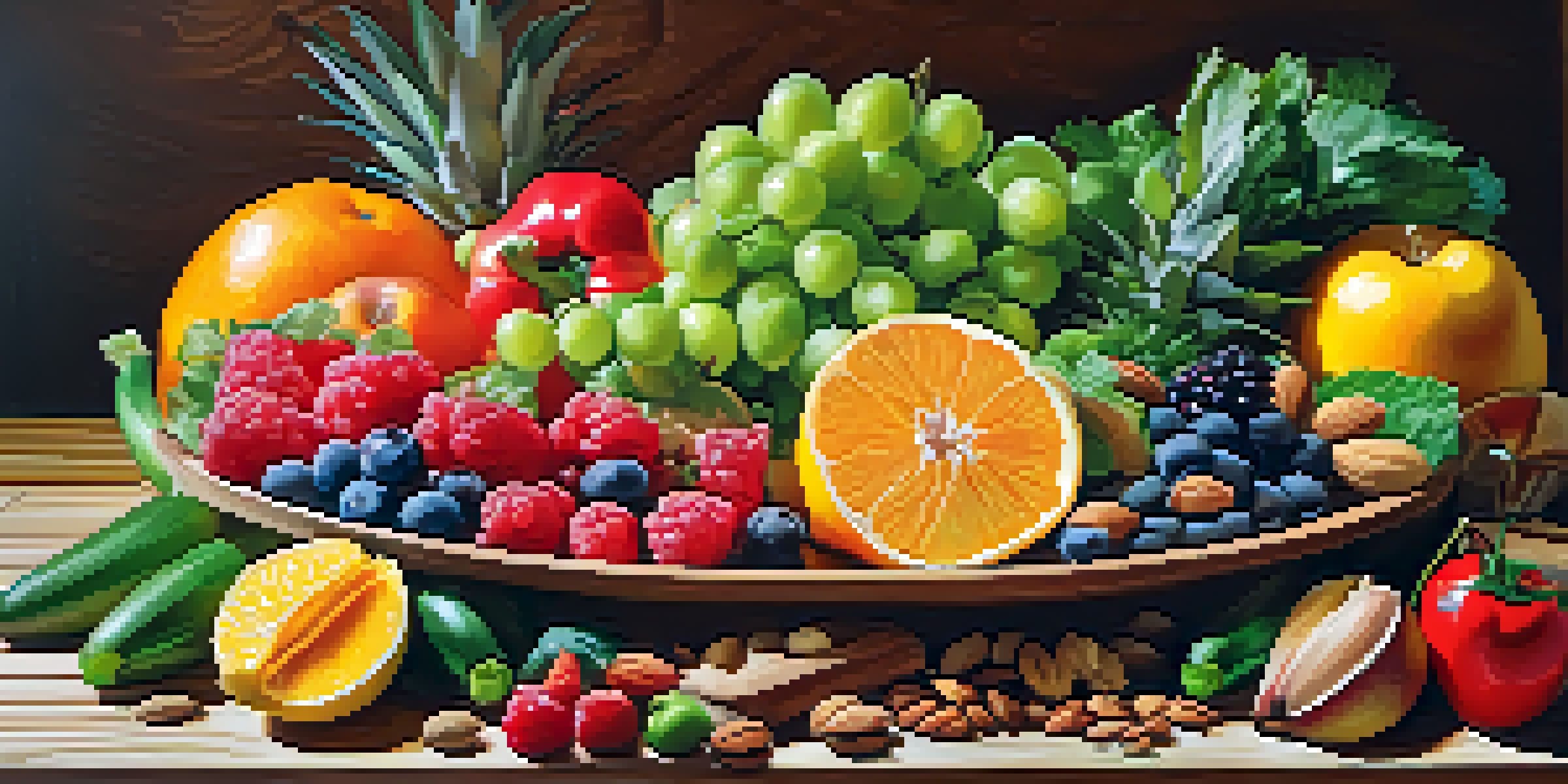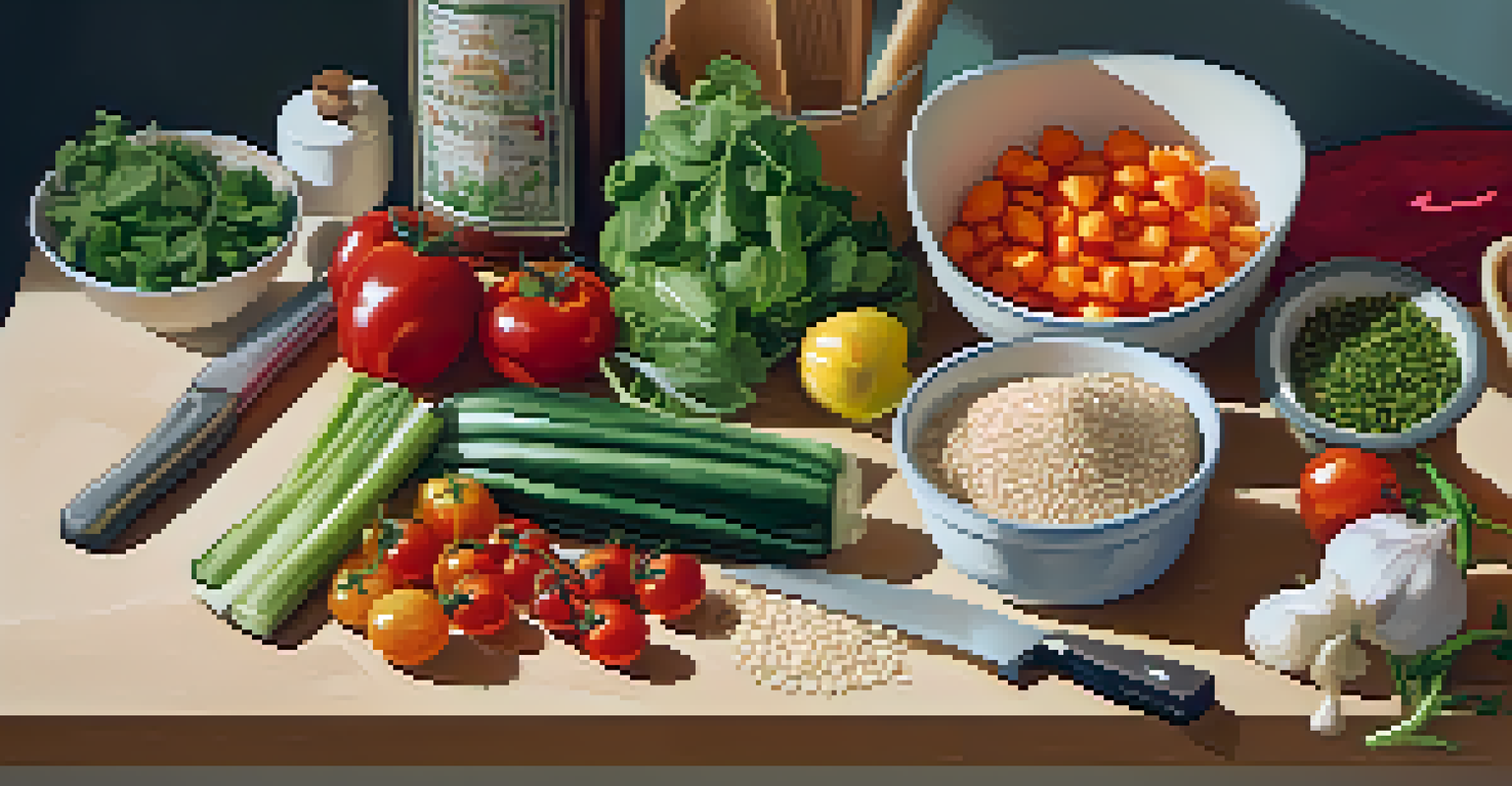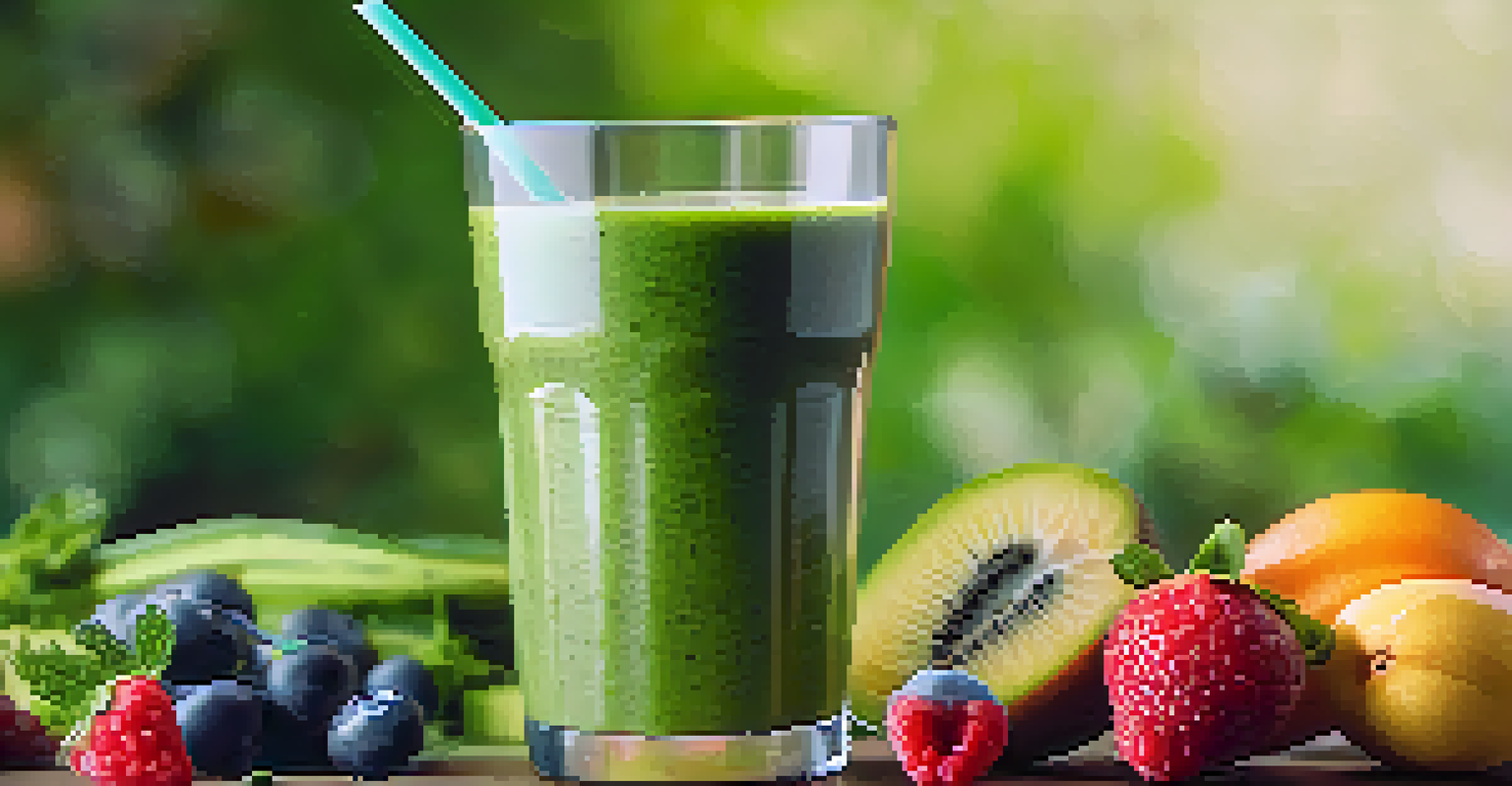Top Ten Essential Raw Cooking Techniques for Beginners

Understanding the Basics of Raw Cooking Techniques
Raw cooking emphasizes fresh ingredients, focusing on flavors, textures, and nutritional benefits. Unlike traditional cooking, which often involves heat, raw cooking allows you to enjoy food in its purest form. This method is all about preserving nutrients and the vibrant qualities of fruits, vegetables, nuts, and seeds.
Let food be thy medicine and medicine be thy food.
For beginners, understanding the philosophy behind raw cooking is essential. It encourages creativity and the use of simple, wholesome ingredients. By exploring raw cooking, you can also discover how to enhance your meals with natural flavors without relying on heavy sauces or cooking methods.
As you delve into raw cooking, you'll find it’s not just about salads. There are numerous techniques and preparations that can make your dishes exciting and delicious. With a little practice, raw cooking can become both a fun and healthy part of your culinary journey.
Mastering Knife Skills for Raw Food Preparation
Knife skills are fundamental in raw cooking as they directly affect presentation and texture. Learning proper techniques, such as chopping, dicing, and julienning, can transform ordinary ingredients into beautiful dishes. A sharp knife is your best friend; it makes the process smoother and more enjoyable.

Practice makes perfect, so start with simple vegetables like cucumbers or carrots to build your confidence. As you become more comfortable, you can experiment with different cuts and shapes to enhance your dishes. Remember, the goal is to create a visually appealing meal that excites the palate.
Raw Cooking Preserves Nutrients
Raw cooking emphasizes fresh ingredients, allowing you to enjoy food in its purest form while preserving essential nutrients.
Good knife skills also promote safety in the kitchen. By mastering your technique, you can avoid accidents and work more efficiently. Plus, a well-prepared dish not only tastes better but looks irresistible, making it all the more enjoyable to share with family and friends.
Embracing the Art of Dehydrating Ingredients
Dehydrating is a fantastic technique that enhances the flavor and extends the shelf life of raw foods. By removing moisture, you concentrate the flavors and create unique textures. This method can be used on fruits, vegetables, and even herbs, making it a versatile addition to your raw cooking repertoire.
The food you eat can either be the safest and most powerful form of medicine or the slowest form of poison.
Using a dehydrator or even your oven can yield delightful results. For instance, dehydrated tomatoes can pack a punch in salads or pasta dishes, while fruit leathers made from pureed fruits offer a healthy snack. The possibilities are endless when you start experimenting with different ingredients.
Moreover, dehydrating allows you to preserve seasonal produce, reducing waste and saving money. When you learn to dehydrate, you’ll find yourself with a pantry full of flavorful, nutrient-dense snacks ready to be enjoyed at any time.
Exploring the World of Sprouting Grains and Seeds
Sprouting grains and seeds is a fun and nutritious way to elevate your raw cooking. This technique increases the availability of nutrients and adds a delightful crunch to your meals. Common options include alfalfa, mung beans, and quinoa, each bringing unique flavors and textures to your dishes.
To start sprouting, all you need are some seeds, water, and a jar or sprouting tray. Rinse and soak the seeds, then drain and rinse daily until they sprout. It's a simple process that rewards you with fresh, living food in just a few days.
Knife Skills Enhance Presentation
Mastering knife skills transforms ordinary ingredients into visually appealing dishes, making your meals more enjoyable.
Incorporating sprouts into salads, sandwiches, or smoothies not only boosts nutritional value but also adds an exciting visual element. Once you’ve mastered sprouting, you’ll likely find it becomes a staple in your raw cooking toolkit.
Creating Delicious Raw Sauces and Dressings
Sauces and dressings are essential in raw cooking for adding flavor and moisture. With a few simple ingredients, you can create vibrant sauces that elevate your salads, veggie wraps, and grain bowls. Think of ingredients like nuts, seeds, herbs, and citrus to craft delicious combinations.
For example, a classic raw cashew cream can serve as a base for various sauces, from creamy Alfredo to zesty ranch. Blending nuts with herbs and spices creates rich, flavorful dressings that can completely transform your raw dishes.
Experimenting with different combinations allows you to tailor sauces to your taste preferences. Don't be afraid to get creative; raw cooking is all about embracing fresh flavors and enjoying the process of making your meals unique.
Harnessing the Power of Fermentation in Raw Foods
Fermentation is a time-honored technique that not only preserves food but also enhances its flavor and nutritional benefits. Foods like sauerkraut, kimchi, and kombucha are all products of fermentation, bringing a delightful tanginess and probiotics to your diet. These beneficial bacteria can support gut health and overall well-being.
Starting with simple ferments, like cabbage or carrots, is a great way for beginners to explore this technique. The process requires minimal ingredients—just vegetables, salt, and time. As you experiment, you'll learn to appreciate the depth of flavor that fermentation adds to your raw dishes.
Fermentation Boosts Flavor & Health
Fermentation not only preserves food but also enhances its flavor and offers health benefits through probiotics.
Incorporating fermented foods into your meals can elevate your culinary experience. They can serve as sides, toppings, or even main ingredients, making your raw meals more vibrant and satisfying.
Blending and Juicing for Nutrient-Rich Beverages
Blending and juicing are quick and easy ways to incorporate more fruits and vegetables into your diet. Smoothies and fresh juices are not only delicious but also packed with vitamins and minerals. They offer a convenient way to enjoy the health benefits of raw foods, especially for those busy days.
When blending, consider using a variety of ingredients, such as leafy greens, fruits, and nut butters, to create a balanced and nutritious drink. Juicing, on the other hand, allows you to extract the pure essence of fruits and vegetables, making it easy to consume a larger volume of produce in one sitting.

Both methods are highly customizable, so feel free to experiment with different combinations to find what you love. As you explore blending and juicing, you'll discover a world of flavors and health benefits that make raw cooking even more enjoyable.
The Benefits of Raw Cooking for a Healthy Lifestyle
Raw cooking offers numerous health benefits, from increased energy levels to improved digestion. By focusing on whole, unprocessed foods, you can nourish your body with essential nutrients while reducing the intake of unhealthy additives. This lifestyle encourages more fruits and vegetables, which are key for maintaining overall health.
Moreover, raw meals are generally lower in calories and higher in fiber, making them beneficial for weight management. When you consume more raw foods, you naturally tend to feel fuller and more satisfied, which can help prevent overeating.
Lastly, embracing raw cooking can foster a deeper connection to your food. By preparing meals from scratch and understanding where ingredients come from, you cultivate mindfulness in your eating habits. This holistic approach to food can lead to a healthier, happier lifestyle.